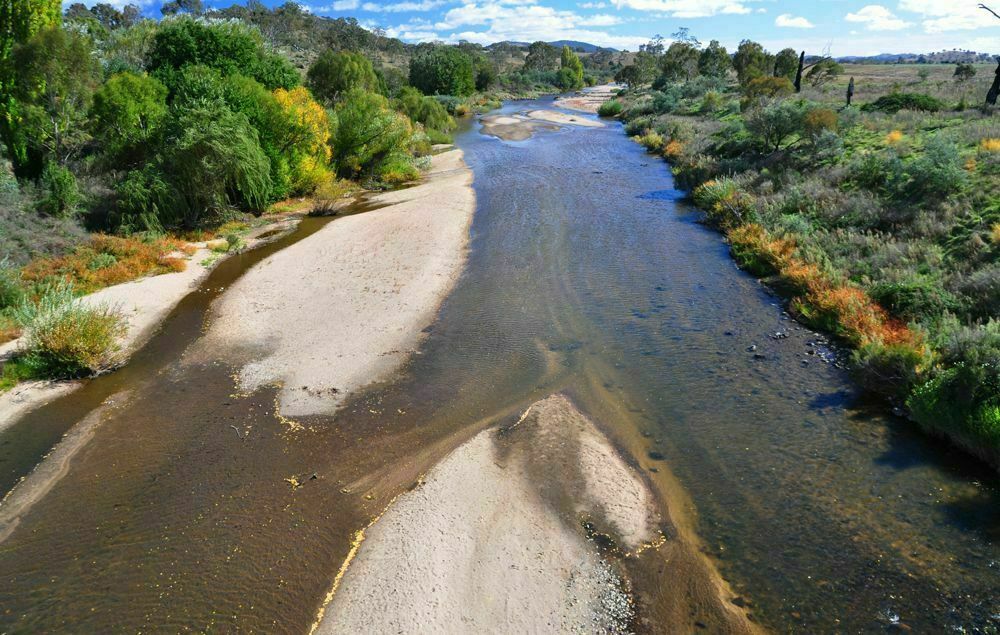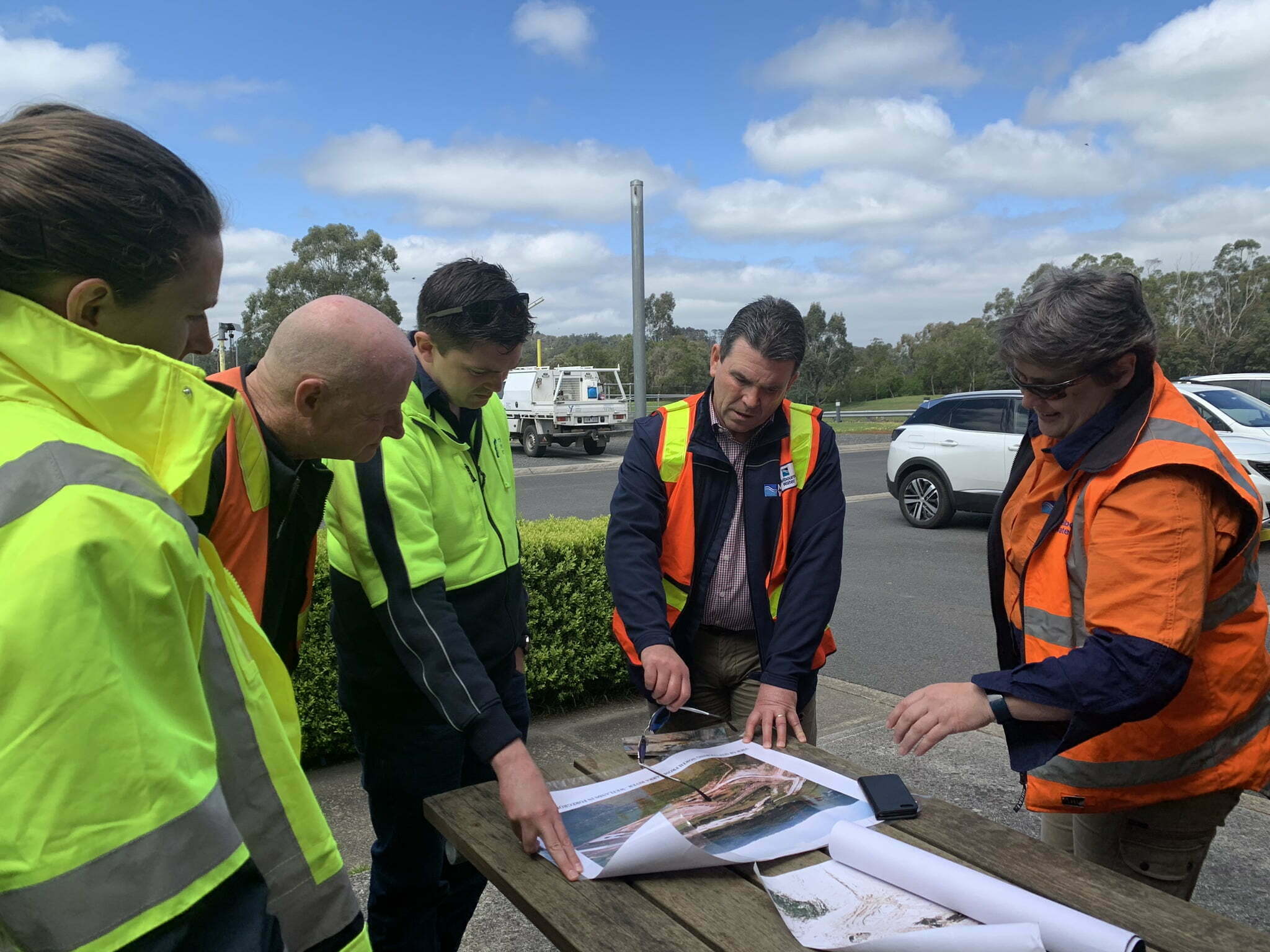
Quick tips:
- Event based monitoring is required to identify water quality issues and their sources.
- Rehabilitation of riparian vegetation etc. will help protect the reach from a number of water quality problems e.g. turbidity, nutrient input, high temperatures.
- Point source pollution will have to be tackled at the source.
- Some large scale problems e.g. cold water pollution, salinity will be expensive to ameliorate and difficult to tackle during the life of a demonstration reach. They may be a reason for locating a demonstration reach elsewhere, but investigate to see if any environmental flows projects might be able to collaborate and address these issues.
Poor water quality may cause significant problems in demonstration reaches:
- Turbidity/fine sediments. Can impact directly on fish by clogging gills. Can also smother the bed, reducing habitat diversity, smothering fish eggs and reducing macro invertebrate numbers. Turbidity can also restrict photosynthesis and the growth of aquatic macrophytes.
- Increased nutrient loads. Can lead to algal blooms and increased macrophyte abundance. In extreme cases it can lead to depletion in dissolved oxygen and fish kills.
- Reduced dissolved oxygen. Can lead to fish kills through high nutrient levels and excess organic waste entering the river. Can also be caused by large lengths of unnaturally shallow water.
- Temperature, high and low. Changes from the natural temperature regime can disrupt the life cycles of fish and macro invertebrates. High temperatures may result from removal of riparian vegetation etc, and unseasonally low temperatures may result from cold water release from dams for example.
- Salinity. Saline intrusions to rivers due to land clearing and consequent rising water tables can significantly impact on aquatic biota. For example, River blackfish are sensitive to salinity increases as are the larvae of many fish species and some macro invertebrates.
- Toxicants. Organic and inorganic chemicals such as pesticides and detergents etc elicit a wide range of responses depending on the particular chemical from reduced reproduction in fish and invertebrates to pathological changes in fish gills.
Is there a problem?
Monitoring needs to be undertaken to determine if there are water quality problems in the demonstration reach. If there are problems then identifying why they exist is important to be able to work out the best rehabilitation approach. It may be possible to link in to existing monitoring programs carried out by state or local natural resource management agencies or by community driven programs such as WaterWatch.
Event based monitoring will be required, for example high turbidity levels will be linked to high flow events. Once any problems have been identified and their sources located, appropriate rehabilitation actions can be undertaken.

Rehabilitation actions that address multiple issues:
A number of the rehabilitation actions already described in this Pillar, will assist in maintaining good water quality. For example, riparian rehabilitation will help reduce turbidity, nutrient and high water temperature problems. The introduction of large woody debris can assist with bed and bank stability. It may still be necessary to target these actions where they can be most effective, for example, undertaking riparian rehabilitation next to a cattle feedlot will reduce the risk of high nutrient loads entering the river. It will also be necessary to ensure that there are no drainage lines that run through the riparian zone.
What’s point-source pollution?
Where toxicants are entering the river from point sources, the issue will have to be addressed at that source. (e.g. as factory).
Some large-scale problems:
Some water quality problems will be difficult to address. For example, cold water pollution from a large dam can only be ameliorated by the provision of a highly expensive multilevel off take tower. In this situation in may be inappropriate to locate a demonstration reach downstream of such a structure, as it would be unrealistic to expect a resolution. On the other hand, if a multilevel off take tower is under construction, there is an ideal opportunity to tie this in with a demonstration reach.
Salinity management is likely to be a large issue that needs to be planned at a catchment or even a regional scale. However, small scale salinity problems may be more manageable (see Example 4g). The amelioration of sediment input may in the long-term have to be addressed at the catchment scale by replanting and improved catchment management.


Example 4g:
Katfish Demonstration Reach – Maintaining Water Quality for Murray hardyhead
The Murray hardyhead (Craterocephalus fluviatilis) is endangered under the IUCN Red List 2004, and the federal EPBC Act 1999. It can reside in habitats with a wide range of salinities, but seems to have a competitive advantage in waters with a higher salinity range. Due to numerous threats, the species has suffered a decline in distribution at both a state and basin wide scale. Numerous populations across the Murray Darling Basin are now believed to be extinct from sites where it has historically been recorded. Currently there are eight known sites within South Australia and Victoria where viable populations exist, one of these sites is the Berri Saline Water Disposal Basin, in the Riverland South Australia.
The Berri Saline Water Disposal Basin is located within the the Katfish Reach project area. In the past, the site received high volumes of saline irrigation drainage water from the Berri Irrigation Area. Between 2005 – 2010, inflows of irrigation drainage water declined significantly, through improved irrigation efficiencies due to drought conditions. This resulted in the majority of the Berri Basin drying out, forcing the Murray hardyhead population to retract into a smaller habitat area with unfavorable conditions.
Under the Katfish Reach Demonstration Reach project, the high value of this site for Murray hardyhead was identified, and a range of on-ground interventions were developed to create additional habitat for the species at the site and to upgrade existing infrastructure to achieve appropriate salinity ranges and water level variations at the site to create ideal conditions for Murray hardyhead.
During 2013 the on ground works were completed in the form of a 3km long surface channel along the western edge of the Berri Basin to corral the limited saline irrigation drainage entering the site. The salinity of the drainage water can now be diluted or increased via management of an upgraded water flow control structure which allows fresh water to enter the site from the River Murray when required. Due to these interventions, salinity and water level at the site can be managed to create and maintain ideal conditions for Murray hardyhead. Monitoring of water quality and fish populations is ongoing at the site and recent sampling of Murray hardyhead post intervention, have demonstrated a consistent significant population increase, indicating successful recruitment within the site. Due to the recent rapid decline of Murray hardyhead throughout its range, securing the Berri Basin population was critical to ensure the long term future of this species.